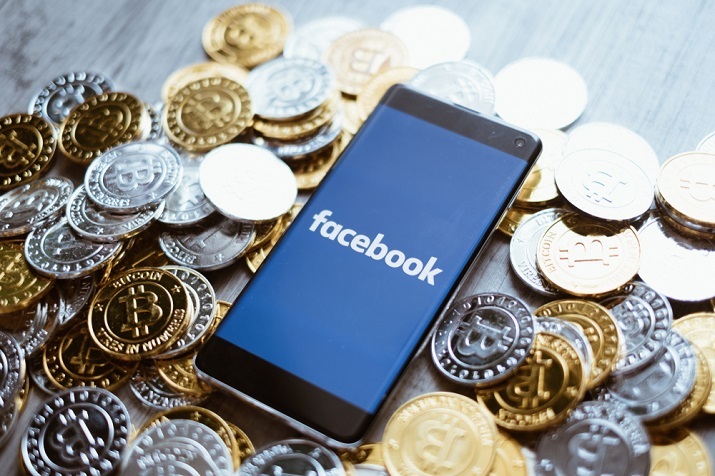
 Data Structure
Data Structure Networking
Networking RDBMS
RDBMS Operating System
Operating System Java
Java MS Excel
MS Excel iOS
iOS HTML
HTML CSS
CSS Android
Android Python
Python C Programming
C Programming C++
C++ C#
C# MongoDB
MongoDB MySQL
MySQL Javascript
Javascript PHP
PHP
- Selected Reading
- UPSC IAS Exams Notes
- Developer's Best Practices
- Questions and Answers
- Effective Resume Writing
- HR Interview Questions
- Computer Glossary
- Who is Who
The Birth and Growth Trajectory of Facebook
Introduction
Social media offers numerous platforms to people through which they can connect with other human beings, post their ideas and ways of life, and also use the application to connect with people to buy or sell products and services. One of them is the popular and everyone's favorite Facebook.

Facebook has revolutionized the digital world. Having a presence on social media is a necessity in today's world; however, it important at the same time to understand the success stories of these social media brands. Facebook has been on the market for only two decades, but the power it holds is beyond human comprehension.
In this article, we will be diving deep into the birth and growth trajectory of Facebook as a brand to understand the key success factors and strategies implemented by the brand.
The Birth of Facebook
Facebook has its presence in more than 166 countries. Facebook, the World's most active social media site, was founded in 2004 by Mark Zuckerberg. The starting idea for to create this platform was to initially to use it as a platform to keep all the Harvard students in touch.
Facebook today has 2.98 billion active users, which is around 37% of the world's population. Facebook restricts users below 13 years of age from using the application, leading to a world penetration rate of 47.6% as of 2023. If you remove China, where Facebook is blocked as an application to use or install, the total penetration of the monthly users of Facebook will reach 57%.
Facebook, today, is used as a platform to advertise your brand name, products, and services, create awareness, influence voting campaigns, and influence human emotions. This platform collects tons of data, understands the user and their emotions better, and develops on those to create better marketing campaigns, products, services, and content. All of this is possible because of the huge user base of Facebook and the trust it has gained among its users.

Image ? Example of Facebook posting and interactions - Facebook Interface (Attribution: Sean MacEntee, Facebook Interface, CC BY 2.0)
The Growth Trajectory of Facebook
The following factors lead to the growth of Facebook ?
The Market Was Ready and Rolling
Facebook was not the leader or the first mover into social media platforms. There were many companies before Facebook that were successful. The reason why Facebook won over those companies or those companies got lots of attention in a short period of time is that they were not adapting as per the market and the consumers' demands. Facebook learned from its mistakes, so in that sense, the market was ready and rolling. Facebook entered the market and just overcame the shortcomings of the previous breed or the existing competition. Companies were hugely focused on the advertising money that they could generate from the platform, were not innovating or improvising the platforms as per customer requirements, were not even making efforts for users to feel safe in the sea of the internet, and hence were demolished with time. Facebook, as a brand, took care of these factors and was hence at the top of the list.
Facebook Focused on Creating a Safer Space Than on Rapid Growth
Myspace was a huge platform with international users from various countries. The application was booming and was an open-source platform. The major disadvantage of this platform was that users did not feel safe sharing their data, their whereabouts, or their pictures and videos.
On the other hand, Facebook started only by connecting Harvard students, then expanded its horizons to Ivy League colleges, and then to the rest of the world above the age of 13. Hence, giving the customers enough time (around 2 years) to adapt and get used to the changes Along with this, there were options in which the user could make his profile public or private.
Facebook Presented Itself as A Media Platform and Fixed Bugs
Unlike Myspace, whose only focus was to get more and more advertisement revenue, Facebook portrayed itself as a platform that cared about technology innovation and customer demands.
Facebook announced new features, better safety protocols, and a wider expansion with time. It cared for its users, and users in return cared for the company by believing in the ads shown on the Facebook walls and helping Facebook earn a commission.
Customer-Centric Innovations On Technology Platform
Facebook has over the years introduced many new features and also changed the user interface of the application to serve the customer better. Facebook is highly invested in understanding its users, optimizing their search results, and fixing bugs on the platform.
Facebook Served its Customers Right
Facebook linked ads to target users as per the user data, hence advertising the products on Facebook became easier and more effective than other traditional channels of marketing communications, and since the company was running on ad money, it never had the need to launch premium accounts to gain money from users or charge them a fee for the usage.
Facebook started target advertising after getting inspired by the quote that half of the advertisement goes in vain, and the sad reality is that we do not know which half. Facebook used its user data to generate revenue and, in lieu, gave users a free platform to use. This exchange of data created a lot of user concerns and privacy issues, but ultimately they were resolved, and the users again started trusting the brand and the platform.
Conclusion
Facebook, as a brand today, holds immense power. The number of users it has worldwide is a boon and a bane in disguise. It should be used as a platform to engage with customers as well as gain new ones. India has the highest number of users on Facebook, and in many studies, it has been found that people spend a lot of time (4 hours a day) on their mobile phones. Facebook as a brand has achieved success which is admirable. All Facebook did right as a brand was that it heard its customers, understood what customers needed and provided the same, and kept its customers happy through all the obstacles.

